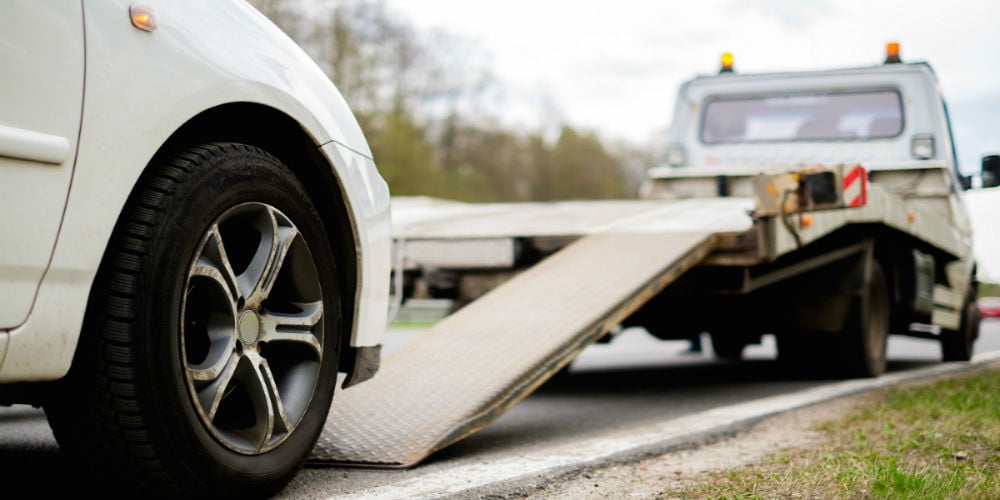Lifestyle
How much are repo fees? Costs of vehicle repossession

Repossession, or “repo,” occurs when a lender reclaims a vehicle due to missed loan payments. While this process can be stressful, understanding how much are repo fees can help individuals prepare financially and work toward resolving the issue for an easier lifestyle.
This article breaks down the factors influencing repo fees, common charges, and steps to manage repossession costs effectively.
What are repo fees?
Repo fees are the costs associated with the repossession process. These fees typically include the expenses incurred by the lender or repo company to retrieve, store, and eventually return or sell the repossessed vehicle.
The borrower is usually responsible for covering these fees as part of resolving the defaulted loan.
Common repo fees
- Repossession fee: The cost charged by the repo company for retrieving the vehicle.
- Storage fees: Charges for keeping the vehicle in a storage facility until it is reclaimed or sold.
- Transportation fees: Costs for towing the vehicle to a storage lot or auction site.
- Administrative fees: Expenses for paperwork, processing, and legal documentation.
- Redemption fees: Charges for retrieving the vehicle after paying off the loan or outstanding balance.
How much are repo fees on average?
The exact amount of repo fees can vary widely based on factors such as the location, the lender’s policies, and the vehicle’s condition. On average, repo fees range from $200 to $700, but additional costs may push the total higher.
Influencing factors
- Location
- Urban areas with higher costs of living may have higher repo fees due to increased operational expenses for repo companies.
- State regulations can also impact the fees, as some states cap the maximum amount lenders can charge.
- Vehicle type
- Larger or more specialized vehicles, such as trucks or luxury cars, may incur higher transportation and storage fees.
- Storage duration
- The longer the vehicle remains in storage, the higher the cumulative storage fees. Daily rates can range from $10 to $50 or more.
- Repo company practices
- Fees may vary depending on the company handling the repossession. Some charge flat rates, while others bill based on specific services.
Breaking down common repo fees
Repo fees cover various costs, including repossession, storage, and administrative charges. Understanding these fees helps borrowers plan effectively.
Repossession fee
The repossession fee covers the cost of locating and retrieving the vehicle. This fee typically ranges from $150 to $400, depending on the complexity of the operation and the distance involved.
Storage fees
Storage fees accrue daily while the vehicle is held in the repo company’s lot. The cost can range from $10 to $50 per day, with fees adding up quickly if the vehicle isn’t reclaimed promptly.
Transportation fees
If the repo company needs to tow the vehicle a significant distance, transportation fees may apply. These fees are often calculated based on mileage, with rates ranging from $2 to $5 per mile.
Administrative fees
Administrative fees cover the costs of processing paperwork, notifying the borrower, and handling legal requirements. These fees are usually around $50 to $100 but can vary based on the lender’s policies.
Redemption Fees
If the borrower wants to reclaim the vehicle, they may need to pay a redemption fee in addition to catching up on missed payments and other outstanding charges. Redemption fees typically range from $50 to $250.
How to handle repo fees
If your vehicle has been repossessed, there are steps you can take to manage the associated fees and work toward resolving the issue.
1. Contact the lender
Reach out to the lender as soon as possible to discuss the repossession and obtain a detailed breakdown of the fees. Understanding what you owe is the first step toward resolving the situation.
2. Review your rights
Familiarize yourself with your state’s repossession laws. Some states limit the amount lenders can charge for repo fees, while others require lenders to provide written notice of the costs.
3. Negotiate payment terms
Many lenders are willing to work with borrowers to create a repayment plan that includes the repo fees. Negotiating payment terms can make it easier to reclaim your vehicle or settle the debt.
4. Act quickly
The longer you wait to address a repossession, the higher the fees may climb due to accumulating storage and administrative costs. Acting promptly can help minimize expenses.
5. Seek professional advice
If you’re struggling to handle repo fees or negotiate with your lender, consider consulting a financial advisor or attorney. They can provide guidance on your rights and options for resolving the issue.
Preventing repossession
The best way to avoid repo fees is to prevent repossession altogether. Here are some tips for managing auto loans effectively:
Budget for payments
Ensure that your monthly budget includes room for car payments, insurance, and maintenance costs. Avoid overextending your finances by choosing a vehicle within your means.
Communicate with your lender
If you’re facing financial difficulties, reach out to your lender before missing payments. Many lenders offer hardship programs, payment deferrals, or loan modifications.
Monitor your loan status
Stay informed about your loan balance and payment history to ensure you’re on track. Address any discrepancies with your lender promptly.
To summarize
Understanding how much are repo fees and the factors that influence them can help borrowers navigate the repossession process more effectively. While the average cost ranges from $200 to $700, fees can vary based on location, vehicle type, and storage duration.
By acting quickly, communicating with lenders, and seeking professional advice when needed, borrowers can manage repo fees and work toward resolving their financial obligations.
